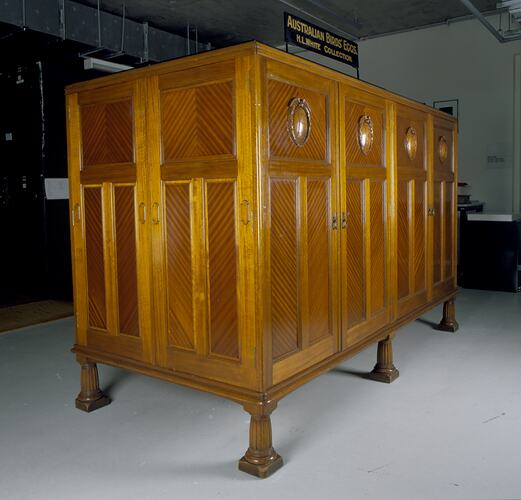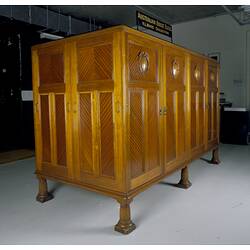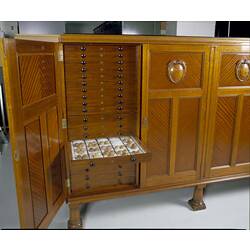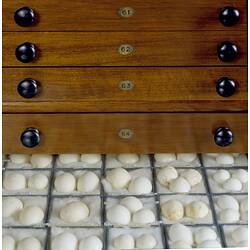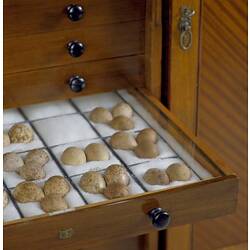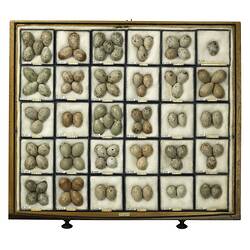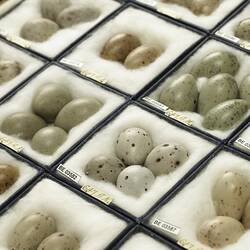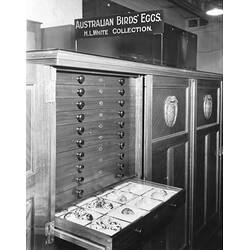Summary
The H. L. White collection of Australian bird eggs remains the finest of its type, with most native species represented. The egg clutches are housed in a magnificent custom-built cabinet made by the famous furniture manufacturer Beard Watson Ltd of Sydney in 1908. The cabinet, made from Queensland Maple (Flindersia brayleyana), a tree native to rainforests of northeast Queensland, is divided into eight sections housing about 4,300 clutches, totalling nearly 13,000 eggs, in 137 glazed drawers.
Henry Luke White (1860-1927) was a wealthy pastoralist, ornithologist, philatelist and philanthropist, who lived at "Belltrees" near Scone in New South Wales. His passion for egg collecting began as a boyhood hobby and continued throughout his life. He purchased large established collections and employed field collectors to travel throughout Australia collecting birds and clutches of eggs. In 1907, White purchased a large and unique collection of Australian bird eggs from the naturalist Sidney William Jackson (1873-1946), whom White then employed as both curator and field collector.
Following his death in May 1927, White's egg collection, including this magnificent cabinet, was bequeathed to the National Museum of Victoria, and arrived in Melbourne during August of that year. White had previously donated his collection of 8,850 bird study-skins and bird nests to the Museum in 1917.
Although White was a well-known as an ornithologist and collector in New South Wales, controversiall, his collection came to Victoria - a direct result of White's bitter rivalry with Alfred North (1855-1917), the then curator of birds at the Australian Museum in Sydney.
The H. L. White egg collection is significant for its coverage of species, displays of egg variation and for the data on breeding biology associated with each clutch of eggs, including those of the extinct Paradise Parrot, collected in 1896 from Queensland.
Classification
Specimen Details
-
Collection Names
-
Taxon Name
-
Donor
-
Category
-
Scientific Group
-
Discipline
-
Collecting Areas
-
Type of Item
Taxonomy
-
Family
